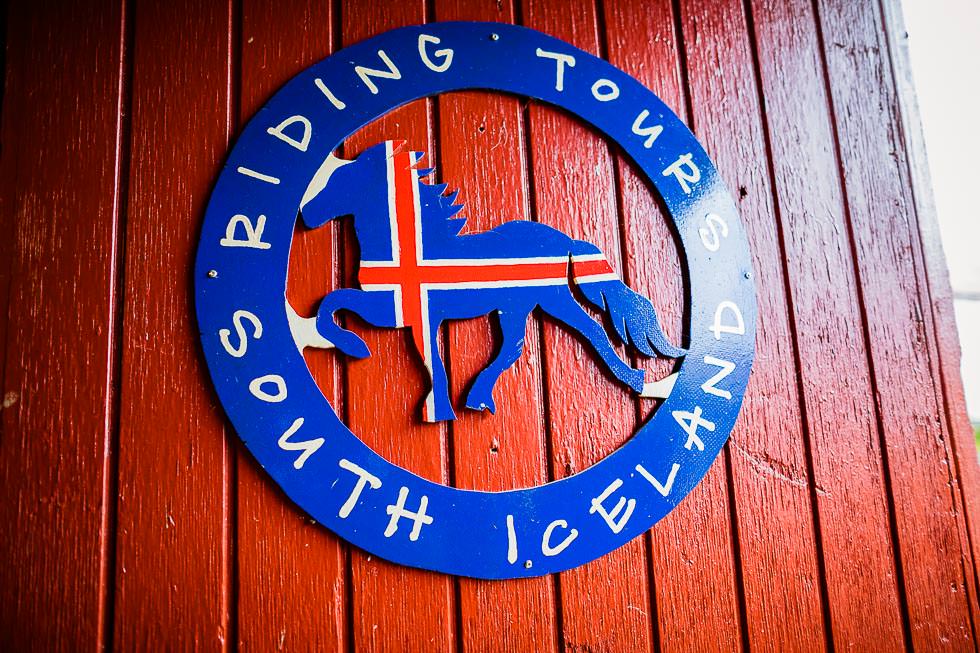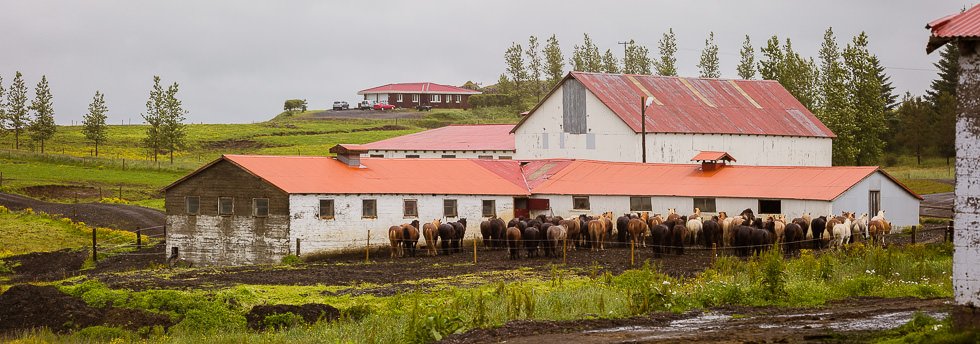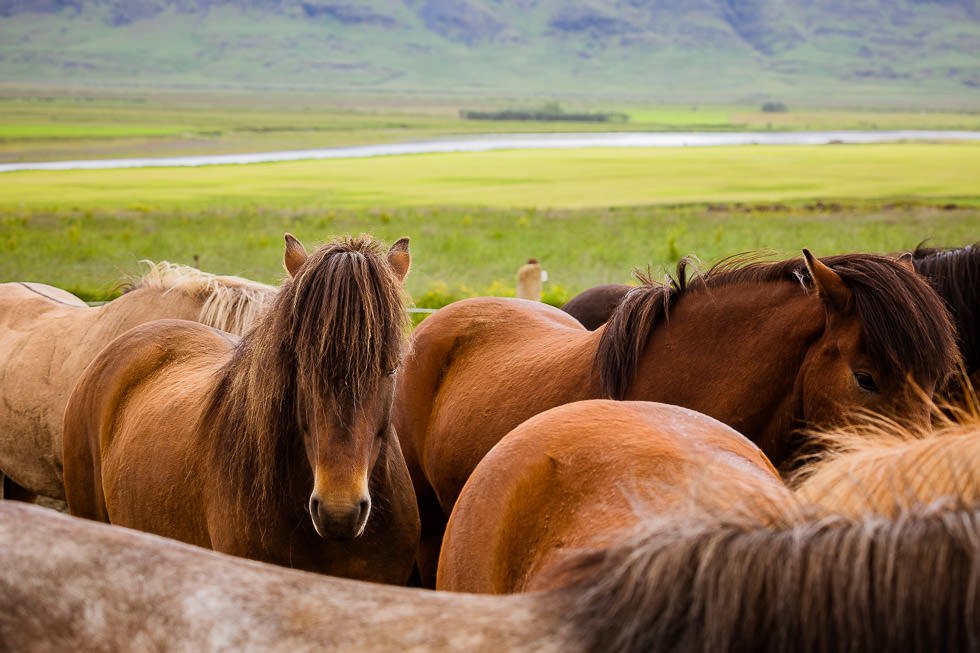Was wäre Island ohne seine Pferde? Man begegnet Ihnen überall und kann garnicht anders als sich in sie zu verlieben. Und wenn man nicht schon nicht einen ganzen Reiturlaub in Island bucht dann muss man zumindest einen Tag lang ausreiten wenn man dort ist.
Denn auf dem Rücken der Pferde liegt bekanntlich das Glück dieser Erde:))
Riding Tours South Iceland ist die erste Adresse im Goldenen Circle bei Fludir für Tagesausritte (auch für Kinder) wie auch für längere Touren. Uns hat es so gut dort gefallen das wir wieder gekommen sind und sicher auch in unserem nächsten Islandurlaub dorthin zurückkehren werden.
Riding Tours South Iceland ist ein Familienunternehmen und befindet sich in Syðra-Langholt 3, 845 Hrunamannahreppur, rund 100 Kilometer von der isländschen Hauptstadt Reykjavik entfernt. Riding Tours South Iceland bietet alle Arten von Reittouren von einer Stunde bis zu achttägigen Tagestouren an.
Sigmundur Jóhannesson (Simmi) ist der Besitzer von Riding Tours South Iceland. Er arbeitet seit 1987 mit Reittouren und verfügt über mehr als 27 Jahre Erfahrung. Er liebt Pferde, Outdoor-Aktivitäten und Reisen. Simmi ist seit seinem 20. Lebensjahr Landwirt und liebt es immer noch.
Arna Þöll Sigmundsdóttir ist Simmis Tochter. Arna und ihr Freund Þorsteinn Gunnar Þorsteinsson (Steini) kümmern sich um das operative Geschäft von Riding Tours South Iceland und sind Mit-Besitzer. Arna kümmert sich hauptsächlich um die Buchungen und die Organisation.Steini wurde von Hólar in Hjaltadalur als Reitlehrer und Reitlehrer ausgebildet. Steini hat wirklich gute Erfahrungen mit dem Trainieren, Führen und Lehren von Pferden und Menschen.
Das Islandpferd, auch Isländer oder Islandpony genannt, ist eine aus Island stammende, vielseitige und robuste Pferderasse, die dank ihres kräftigen Körperbaus auch von Erwachsenen geritten werden kann. Islandpferde gehören zu den Gangpferden, da die meisten von ihnen nicht nur über die Grundgangarten Schritt, Trab und Galopp verfügen, sondern zusätzlich über die genetisch fixierten Gangarten Tölt und/oder Pass. Als „Islandpferd“ anerkannt werden nur reingezogene Tiere, ohne Fremdbluteinkreuzung, deren Abstammung lückenlos bis nach Island zurückzuverfolgen ist. In Island ist die Einfuhr von Pferden zur Vermeidung von Krankheiten verboten. Daher können Pferde, die in Island geboren wurden und einmal die Insel verlassen haben, nicht wieder nach Island eingeführt werden.
Islandpferde schwanken im Typ. Während viele – gerade ältere Pferde – im Ponytyp stehen, entspricht ein elegantes, flexibles, gut bemuskeltes, im Reitpferdetyp stehendes Islandpferd mit schön getragenem, ausdrucksvollem Kopf und vollem Schweif– und Mähnenhaar dem derzeitigen Zuchtziel der FEIF. Dieses Zuchtziel ist jedoch umstritten, wie sich häufig im IPZV-Verbandsorgan „Das Islandpferd“ zeigt.
Isländer sind rassetypisch robust und wetterhart, denn sie entwickeln ein besonders dichtes Winterfell, das es ihnen ermöglicht, in ihrer isländischen Heimat draußen zu überwintern.
Bei den Islandpferden findet man eine Vielzahl von unterschiedlichen Fellfarben. Neben den Grundfarben Füchse, Rappen, Braune gibt es auch Schimmel, Falben, Isabellen, Erdfarbene, Smoky Black, Silver Dapple bzw. Windfarbene und Roan bzw. Farbwechsler. Letztere sind bei dieser Rasse relativ selten. Von den Scheckzeichnungen sind die Tobiano-Schecken beim Islandpferd am häufigsten anzutreffen. Seltener sind Splashed-White-Schecken beim Islandpferd. Bei einer Stute wurde als Rarität die Zeichnung „dominant white“ nachgewiesen. Es ist eine spontane Mutation, die jedoch zu 50 % an die Nachkommen vererbt werden kann. Andere Schecken wie Sabino Overo oder die Leopardenscheckung kommen beim Islandpferd nicht vor.
Ein Islandpferd ist erst mit ca. sieben Jahren ausgewachsen. Mit Rücksicht auf die späte körperliche Reife der Pferde werden sie erst zwischen dem vierten und fünften Lebensjahr angeritten. Islandpferde werden normalerweise recht alt, 30 bis 35 Jahre und mehr sind keine Seltenheit. Häufig können die Pferde noch weit über ihr 25. Lebensjahr hinaus geritten werden.
Laut einer Statistik der FEIF (der internationalen Vereinigung der nationalen Islandpferdeverbände) von 2010 gibt es weltweit über 300.000 Islandpferde. Die meisten Pferde stehen mit etwa 78.000 im Mutterland Island. Deutschland ist nach Island das größte Zuchtgebiet für Isländer mit rund 65.000 Pferden.
Islandpferde-Vereine, die der internationalen Organisation FEIF angeschlossen sind, gibt es inzwischen in Island, Österreich, Belgien, Kanada, Dänemark, auf den Färöern, in Finnland, Frankreich, Deutschland, Großbritannien, Italien, Luxemburg, Neuseeland, Niederlande, Norwegen, Slowenien, Schweden, Schweiz und den USA.
In einigen Naturschutzgebieten Mitteleuropas (etwa in den Niederlanden) werden Islandpferde aufgrund ihrer Eigenschaften als Robustpferde zur ganzjährigen extensiven Weidehaltung genutzt, um die Flächen offen zu halten.
******************************************************************************************************************************
What would Iceland be without its horses? You meet them everywhere and can not help but fall in love with them. And if you do not already book a horse riding vacation in Iceland then you have to ride out for at least a day if you are there.
Because the happiness of this earth lies on the back of the horses:))
Riding Tours South Iceland is the first address in the Golden Circle at Fludir for day trips (also for children) as well as for longer trips. We liked it so much that we came back.
Riding Tours South Iceland is a family owned business located in Syðra-Langholt 3, 845 Hrunamannahreppur, about 100 kilometers from the capital of Reykjavik. Riding Tours South Iceland offers all kinds of horse riding tours from one hour to eight day trips.
Sigmundur Jóhannesson (Simmi) is the owner of Riding Tours South Iceland. He has been riding with horses since 1987 and has more than 27 years of experience. He loves horses, outdoor activities and travel. Simmi has been a farmer since he was 20 and still loves it.
Arna Þöll Sigmundsdóttir is Simmi’s daughter. Arna and her friend Þorsteinn Gunnar Þorsteinsson (Steini) take care of the operating business of Riding Tours South Iceland and are co-owners. Arna mainly looks after the bookings and the organization. Stefini was trained by Hólar in Hjaltadalur as a riding instructor and riding instructor. Steini has really good experiences with training, leading and teaching of horses and humans.
The Icelandic horse, also called Icelandic or Icelandic pony, is an Icelandic, versatile and robust breed of horse, which can be ridden by adults due to their strong physique. Icelandic horses belong to the gait horses, as most of them not only have the basic gaits step, trot and gallop, but also the genetically fixed gaits Tölt and / or Pass. Only „purebred animals“ are recognized as „Icelandic horse“, without crossbreeding, whose origin can be traced back to Iceland completely. In Iceland, the import of horses to prevent disease is prohibited. Therefore, horses that were born in Iceland and have once left the island can not be reintroduced to Iceland.
Icelandic horses vary in type. While many – especially older horses – in the pony type, an elegant, flexible, well muscled, standing in the riding horse type Icelandic horse with beautifully worn, expressive head and full tail and mane hair is the current breeding goal of the FEIF. However, this breeding goal is controversial, as is often shown in the IPZV association organ „The Icelandic horse“.
Icelanders are race-type hardy and weather-beaten, because they develop a particularly dense winter coat that allows them to hibernate outside in their Icelandic homeland.
Icelandic horses have a variety of different coat colors. In addition to the basic colors of foxes, crabs, browns, there are also molds, follies, isabells, earthy colors, smoky black, silver dapple or wind-colored and roan or color changer. The latter are relatively rare in this breed. Of the check drawings, Tobiano’s peckers are the most common among Icelandic horses. Rarer are Splashed White Punts on the Icelandic Horse. In a mare, the drawing „dominant white“ was detected as a rarity. It is a spontaneous mutation, but 50% of it can be transmitted to the offspring. Other piebalds such as Sabino Overo or the leopard check do not occur with the Icelandic horse.
An Icelandic horse is only about seven years old. In view of the late physical maturity of the horses, they are only ridden between the fourth and fifth year of age. Icelandic horses are usually quite old, 30 to 35 years and more are not uncommon. Often the horses can still be ridden far beyond their 25th year of life.
According to a 2010 FEIF (International Association of National Icelandic Horse Federations) statistics, there are over 300,000 Icelandic horses worldwide. Most horses are with about 78,000 in the motherland Iceland. After Iceland, Germany is the largest breeding area for Icelanders with around 65,000 horses.
Icelandic horse clubs affiliated to the international organization FEIF are now in Iceland, Austria, Belgium, Canada, Denmark, the Faroe Islands, Finland, France, Germany, Great Britain, Italy, Luxembourg, New Zealand, Netherlands, Norway, Slovenia , Sweden, Switzerland and the USA.
In some nature reserves in Central Europe (such as the Netherlands), Icelandic horses are used as robust horses for year-round extensive grazing to keep the land open.

















































